Planning a Self-Supported Grand Canyon Trip
Story and Photos by: Molly Jones
This June, our group of 5 packrafters and 3 hardshellers launched at Lee’s Ferry to embark on a 14-day self-supported expedition down the Grand Canyon. With a small boat and a minimal footprint, we were able to fully experience both the wildness of the Canyon and the exhilaration of the whitewater. It was an absolute trip of a lifetime.
Given limited resources available for how to prepare for this type of trip, we wanted to share what we learned from our self-support packrafting trip and how we planned for it. Everyone is different and may have different needs, this post is meant to help as a guide to help you plan your self-supported trip on the Grand Canyon. Your trip may be much different than ours, so please make sure to plan accordingly for your trip.
Before the Trip
Before we launched, several of us took valuable classes that enabled us to have a successful and safe trip – packrafting-specific courses, swiftwater rescue trainings, and wilderness first responder trainings. These are essential skills going into a self-support backcountry trip.
In addition to these classes, it was critical to practice wet re-entry into your packraft before the trip—ideally in a river with swiftwater, but a lake or a pool also works. Consider fully loading your packraft with the weight you will have for the trip when practicing.
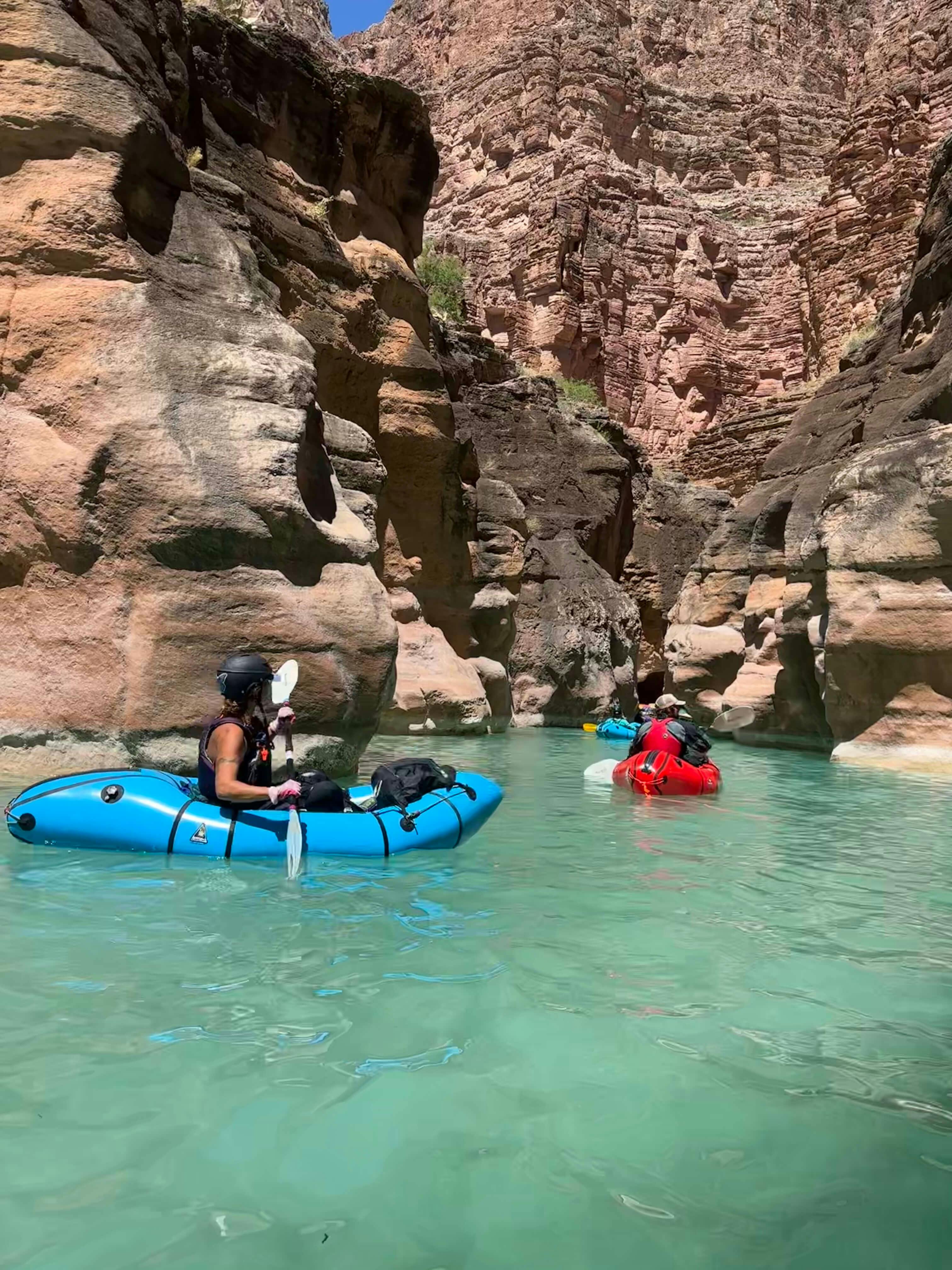

Considerations for Packing
When packing, it is important to keep in mind weight, space, and balance on your packraft. For our trip, all of my food fit in one of the Alpacka dry bags, and the rest of my gear in the other. I then reallocated the weight between them evenly. You can pack some lightweight, bulky items in the stern of your boat. These will slide around as you paddle, and moving them into place with something like a bucket bag works well.
You can store some gear that you will not frequently need in the bow of your boat in a dedicated stuff sack. I put a line around mine that I could pull easily from the cargo fly. For example, I packed my shelter in the bow and never accessed it on the trip. If you do this, consider shaking it into place each morning before unzipping and loading your dry bags.
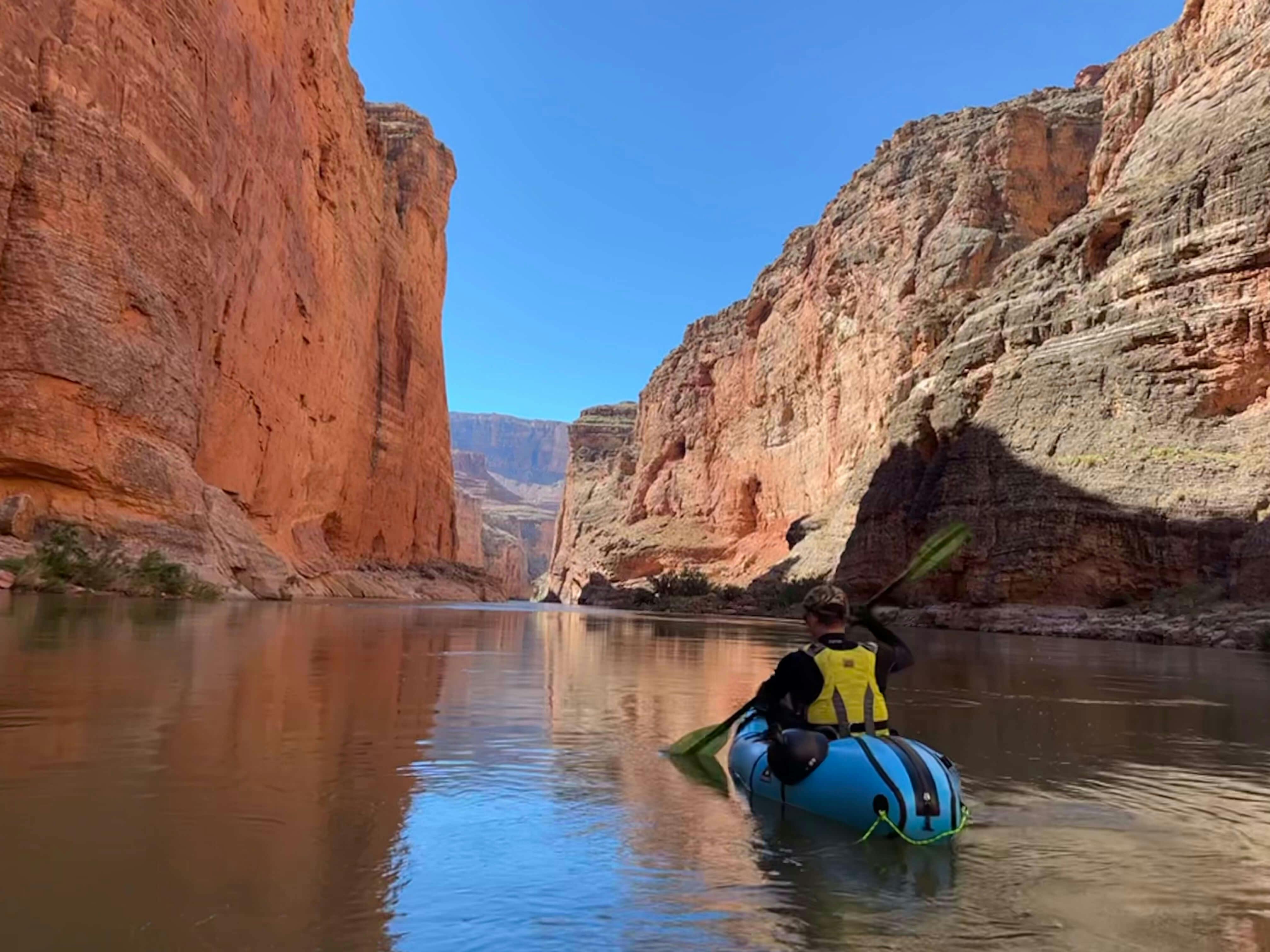
Managing Sand
The pervasive sand in the Grand Canyon campsites does not mix well with any zipper, much less one you are dependent on to stay sea worthy.
Our packraft leader aptly recommended we each pack two tarps (I used tent footprints) to manage sand. We would store one in our bow bag to put one under our boat when we unloaded it at camp, and then would load our gear onto the other tarp. This would help minimize sand on our gear, in the boat, and in the zipper.
We had a toothbrush on us at all times. It is essential to meticulously brush the sand off the zipper every time before opening it, as well as out of the teeth before zipping it up again. We did this each afternoon we got to camp and again in the morning.
Keep your repair kit in your bow bag so you can easily access your lube, tools, and other supplies if you need to address a leak or zipper issue while on the river. This only happened a few times, but it was essential to address right away. Proper Cargo Fly Zipper care instructions can be found here.
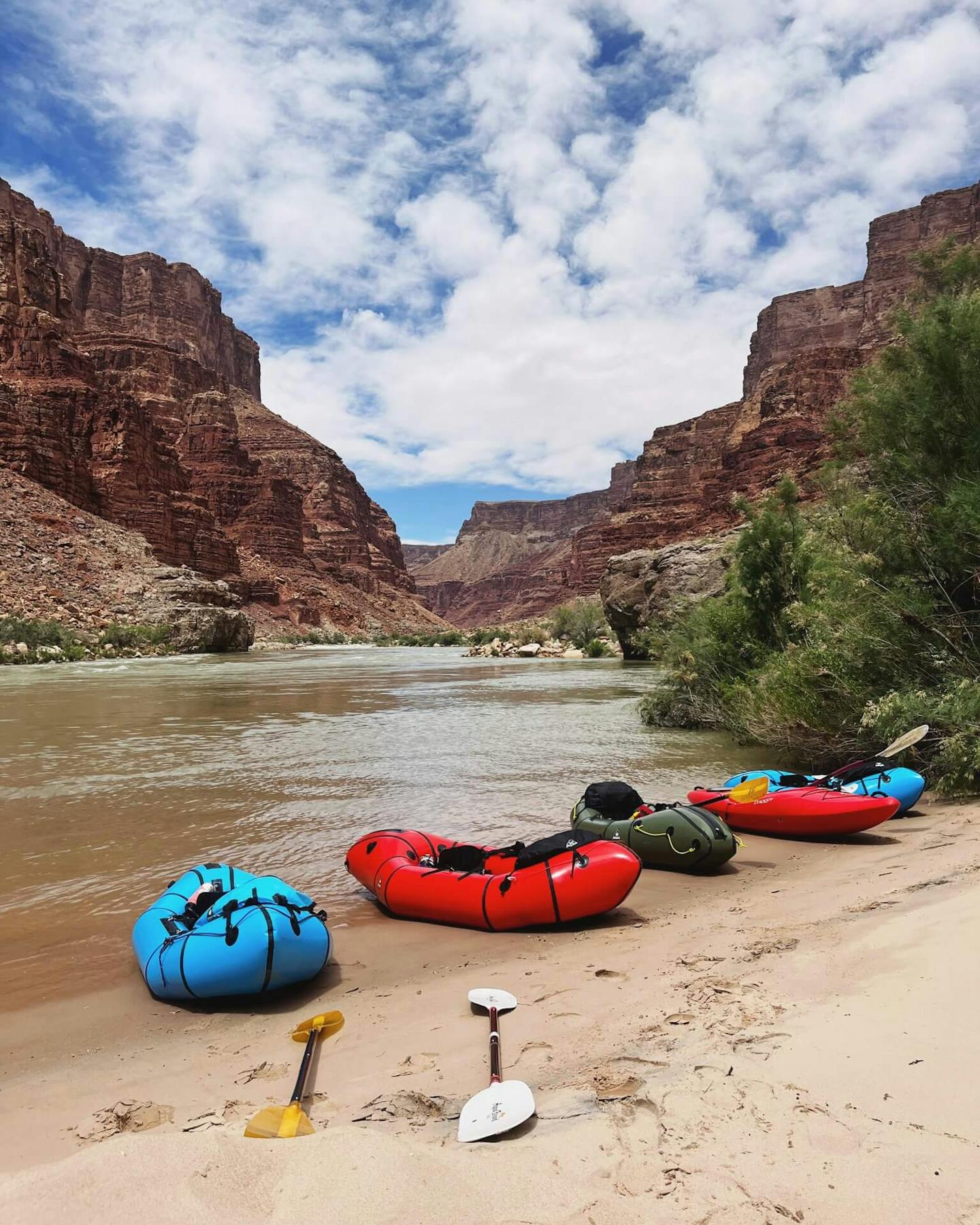
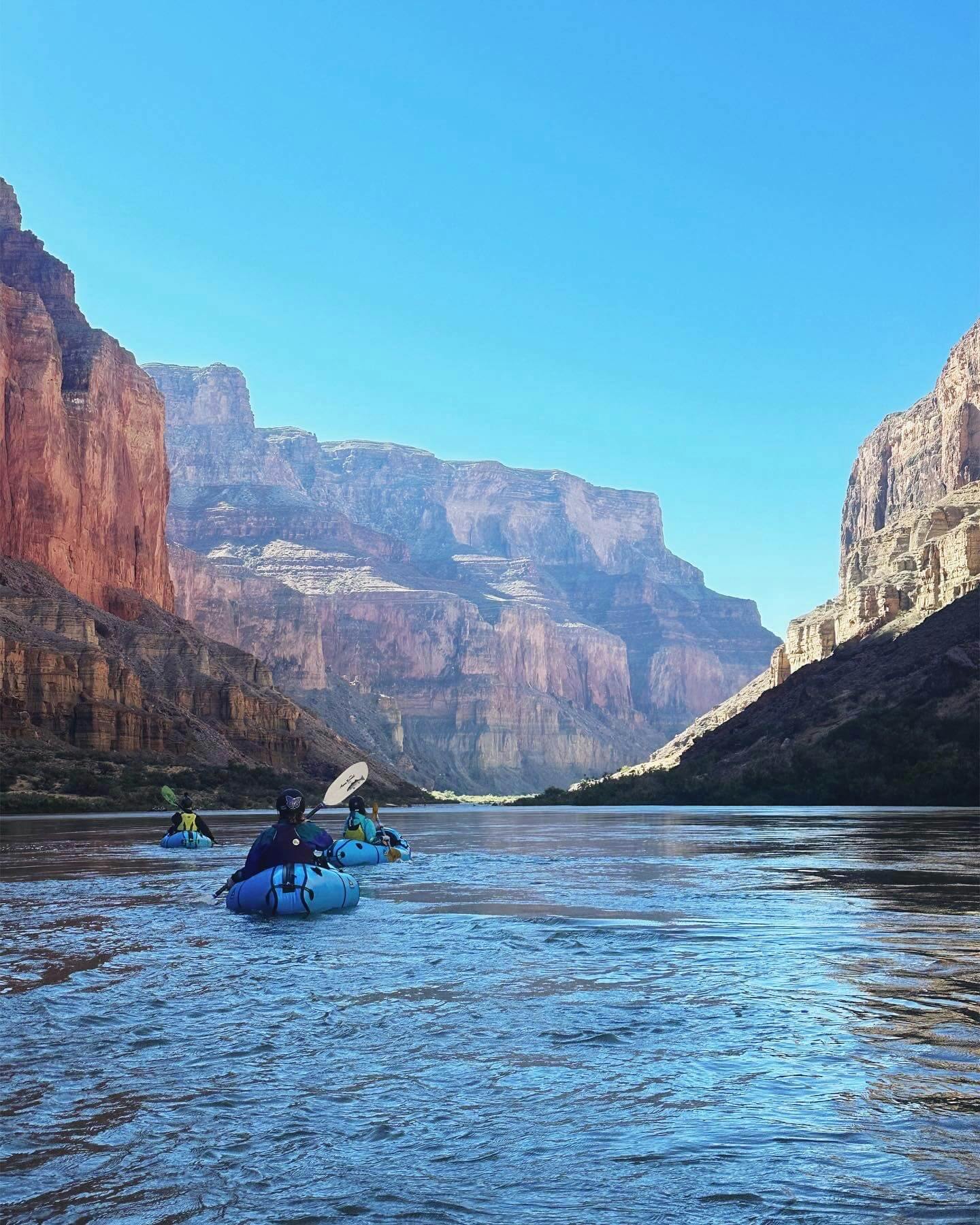
Managing Weight
As a packrafter, you will almost certainly swim in the Grand Canyon. If not in the sharp laterals of Granite (which got all of us), it may be the massive boils at the bottom of the rapid.
Being able to flip your boat back over in the middle of a rapid is critical. For smaller paddlers especially, it is essential to keep the weight of your boat to a minimum. I struggled to get my boat back over a few times, and as a result I had a few gnarly swims that could have been avoided with a lighter pack. This is something to be very mindful of in both balancing weight evenly, as well as only taking the absolute essentials.
If you don’t need it, don’t take it. If you want the luxuries, hop on a raft trip!
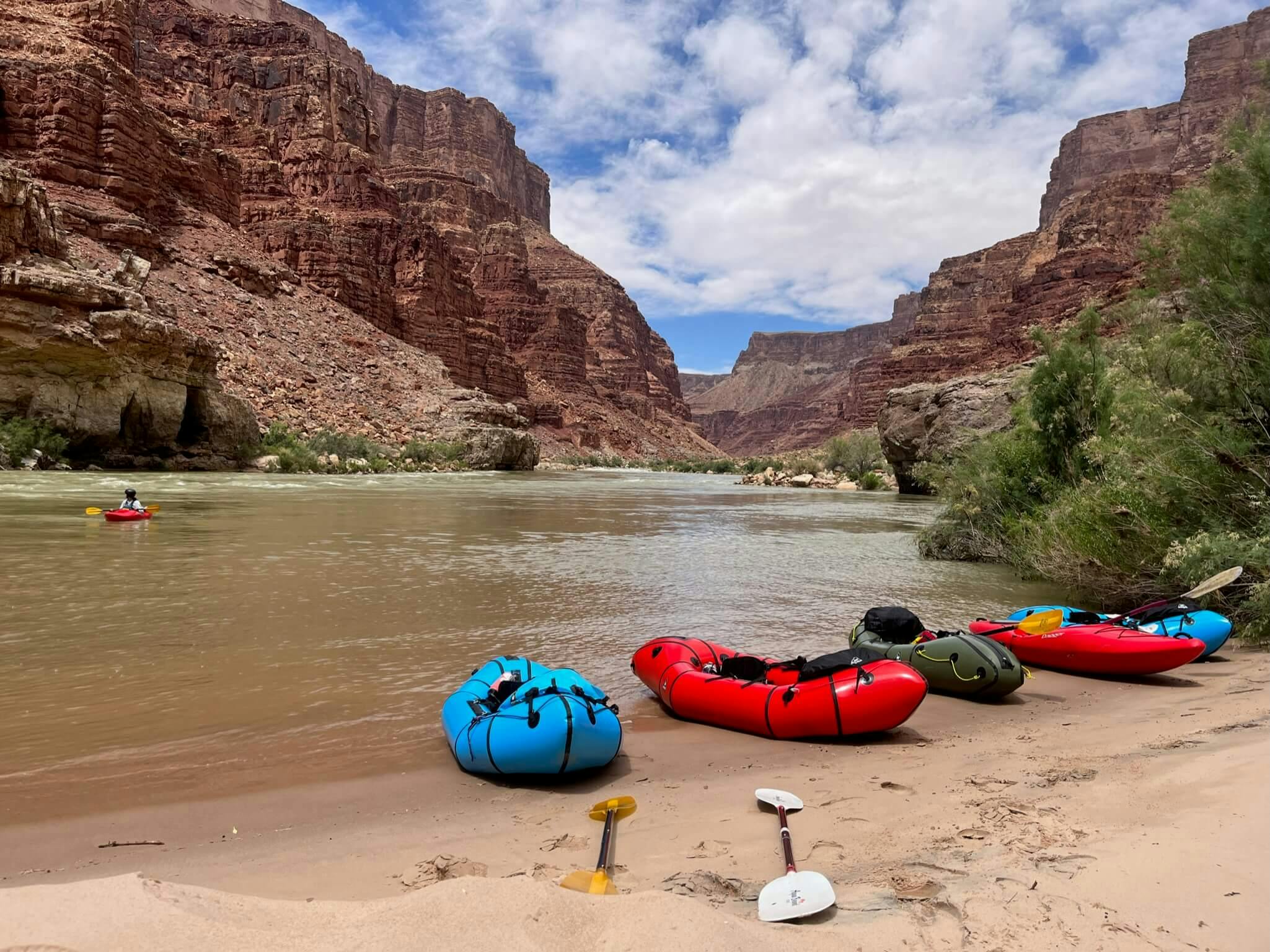

The Food Pack
As backpackers, most of us were already accustomed to preparing lightweight, high-calorie meals. I packed all of my breakfast items into one stuff sack, lunch and snacks into another, and dinner into a third bag. It made for easy food management at camp. To the extent possible, dehydrated or freeze dried food for each meal is best to reduce weight. Transferring dehydrated meals into ziplock bags (and cooking them in your pot) helps reduce bulk and trash. Some paddlers on our trip recommend acclimating to the type of meals you will be eating, as this transition can impact how quickly you use up the space in your tube or can.
Everyone in our group used Aquamira for water purification. We would allow the water to settle in a bucket bag, expedited by alum or water wizard if the water was particularly silty. I recommend bringing an extra set of Aquamira, as many of ours seemed to leak or evaporate, and eventually ran out.
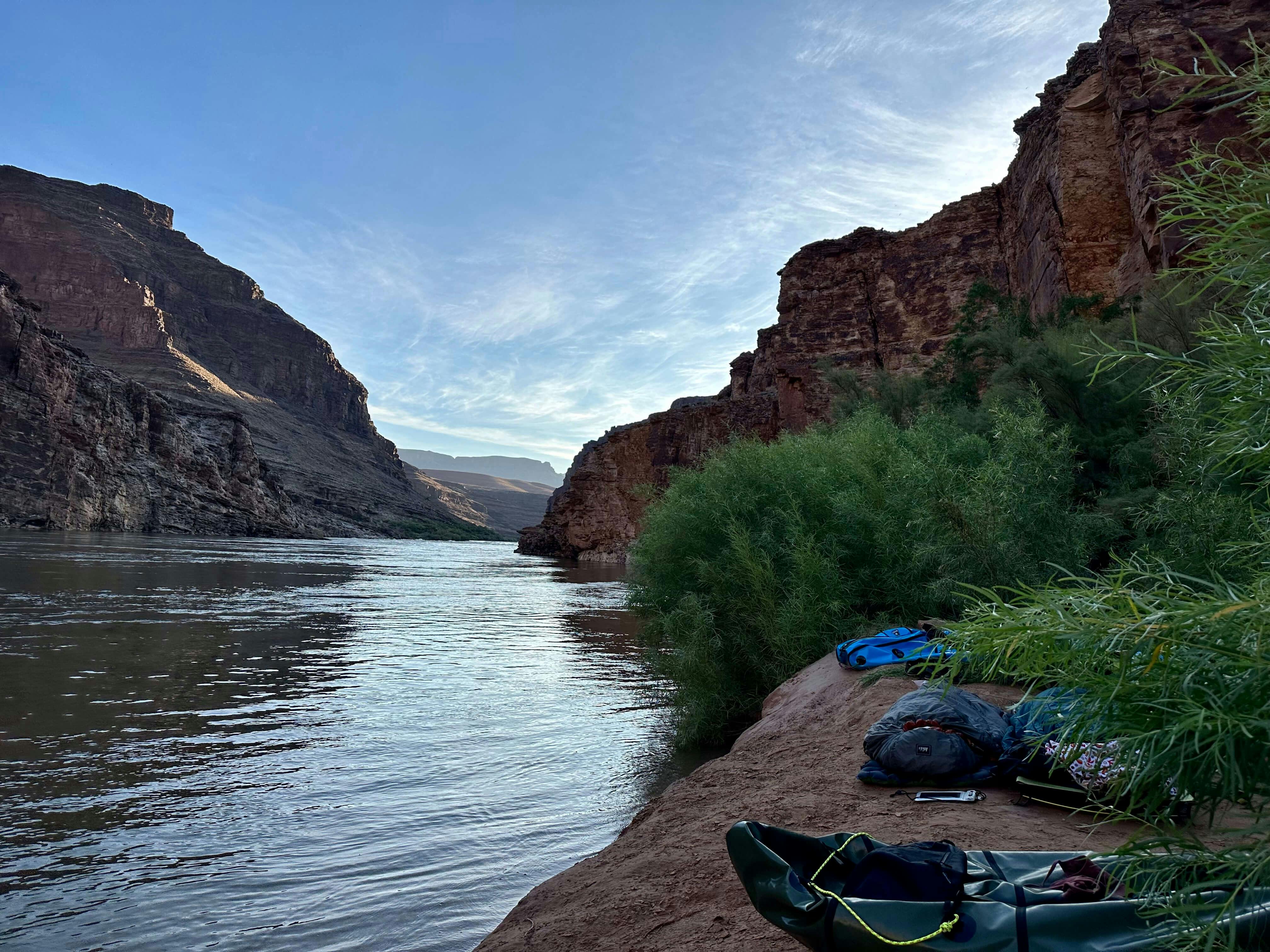
Packing Out Your Waste (Human Waste)
Like many rivers, you need to pack out your own waste on the Grand Canyon. There are generally two options for a self-support trip.
Option 1
Clean Mountain Can. Three people on our trip used the Clean Mountain Can, which is a bucket designed for waste management in mountaineering. The shape of these cans lends itself well to the two weeks of “deposits,” as you can fit multiple layers of your deposits in the wider format. The people who used these did not run out of space, and they packed their cans in the stern of their boats.
Option 2
The PVC pipe method. Five of us used varying types of PVC pipe tubes. I ordered mine from YakTube, and it worked like a charm. Others made them DIY from instructions. Prepare to visit several stores to find all of the parts, including lightweight PVC pipe. If following the DIY method, the cap is an essential component to a well-functioning and well-sealing tube. The Titan Mechanical Test Plug is a highly recommended cap. Do not use a threaded screw-on cap, as sand will get in the threads and create leakages. With this cap and others, there can be a pointy tip at the end. I would recommend making a protective cloth cap to be sure it does not put pokey pressure on your boat.
My tube was 4” diameter by 2’ long, and I nearly ran out of space. I would recommend a larger size. With the PVC pipe, deposits do not stack quite as efficiently as the Clean Mountain Can, so a pure volume comparison is misleading. I would recommend a slightly larger tube, or consider doing two smaller PVC pipes, that you could put on both sides of your boat to balance out the weight.
In both methods, we would deposit into doggy bags. We viewed wag bags as too bulky, and ultimately it is undesirable to reopen them for the recommended three deposits per bag. I brought a small Nalgene jar full of bleach crystal powder mixed with septic enzymes. After each deposit, I sprinkled a healthy amount of this on each deposit, bagged it up, and then bagged it again. There were not any smell or leakage issues with this method. Septic enzymes were key, as those who did not use them experienced minor explosions in the heat. Others used kitty litter, which was not sufficiently smell-proof.
Be sure your bathroom stuff sack includes hand sanitizer/soap and toilet paper/wipes.
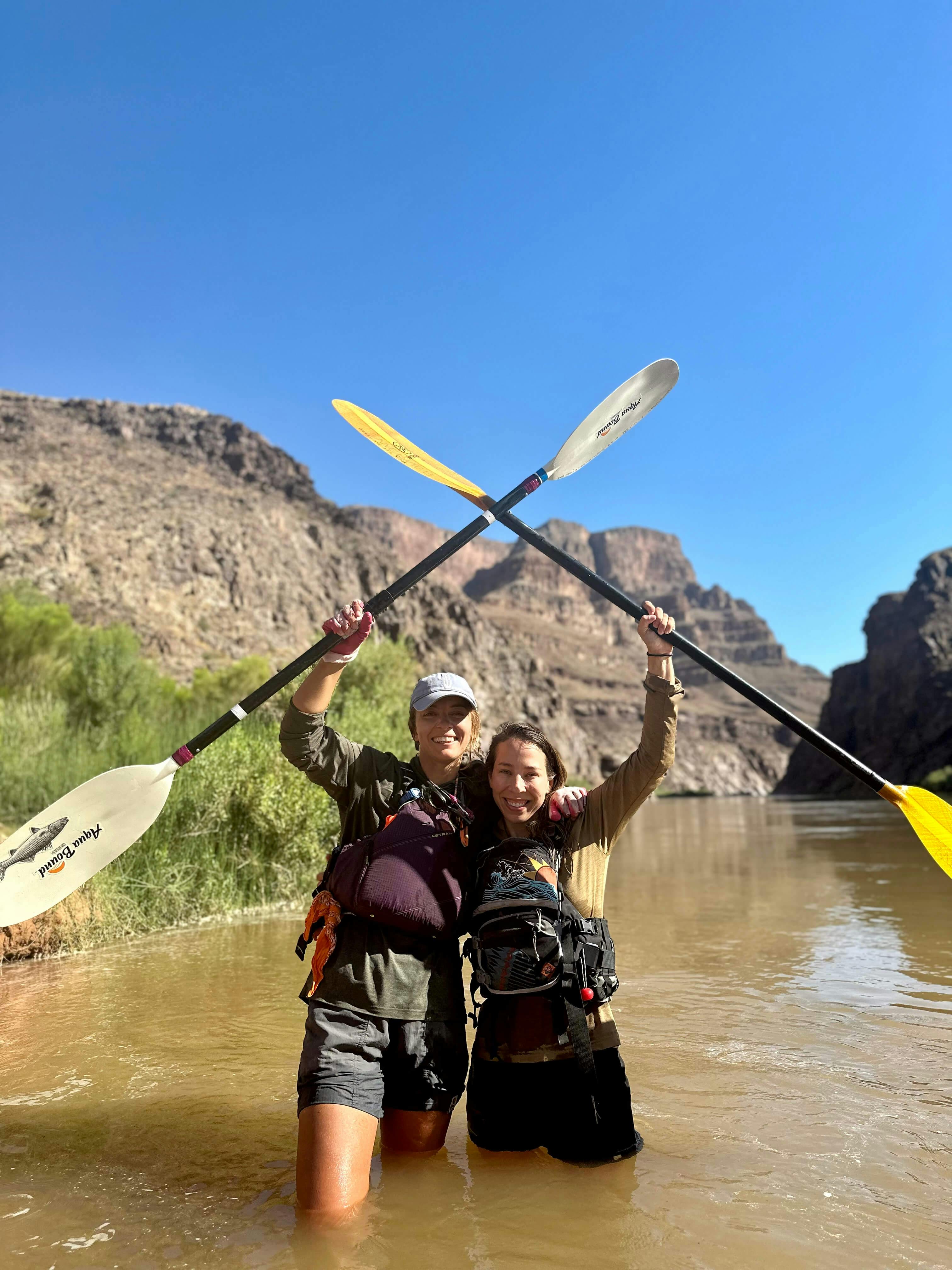
Group Gear
Across the group, there are a number of specific requirements from NPS to bring, outlined in the non-commercial river trip regulations. They require one extra PDF for every four kayaks, one extra paddle for every four kayaks, emergency signaling equipment, satellite phone or GPS device, repair kit, guide materials, a copy of the river regulations, ground cloth, and sieve. Be sure to check in with NPS on the latest requirements.
What to Wear
What to wear paddling on the Grand Canyon will vary widely by season. For our mid-June launch, the water at Lee’s Ferry was reported as 55 degrees and the air was 99 to 105 during the day. We were very comfortable wearing wetsuit bottoms (2mm), various base layers (neoprene or thermal top), and a dry top or splash top over it each day. Others exclusively wear dry suits and neoprene booties.
I wore bedrocks, and others were happy in neoprene booties. Some on our trip were concerned about trench foot, but luckily it was not an issue for any of us. River guides report you can avoid this by using Hibiclens antimicrobial skin wash each night at camp and keeping your feet dry.
Packing List
For those interested, here is a full packing list. This list is for example purposes, everyone is different and may have different items on their list.
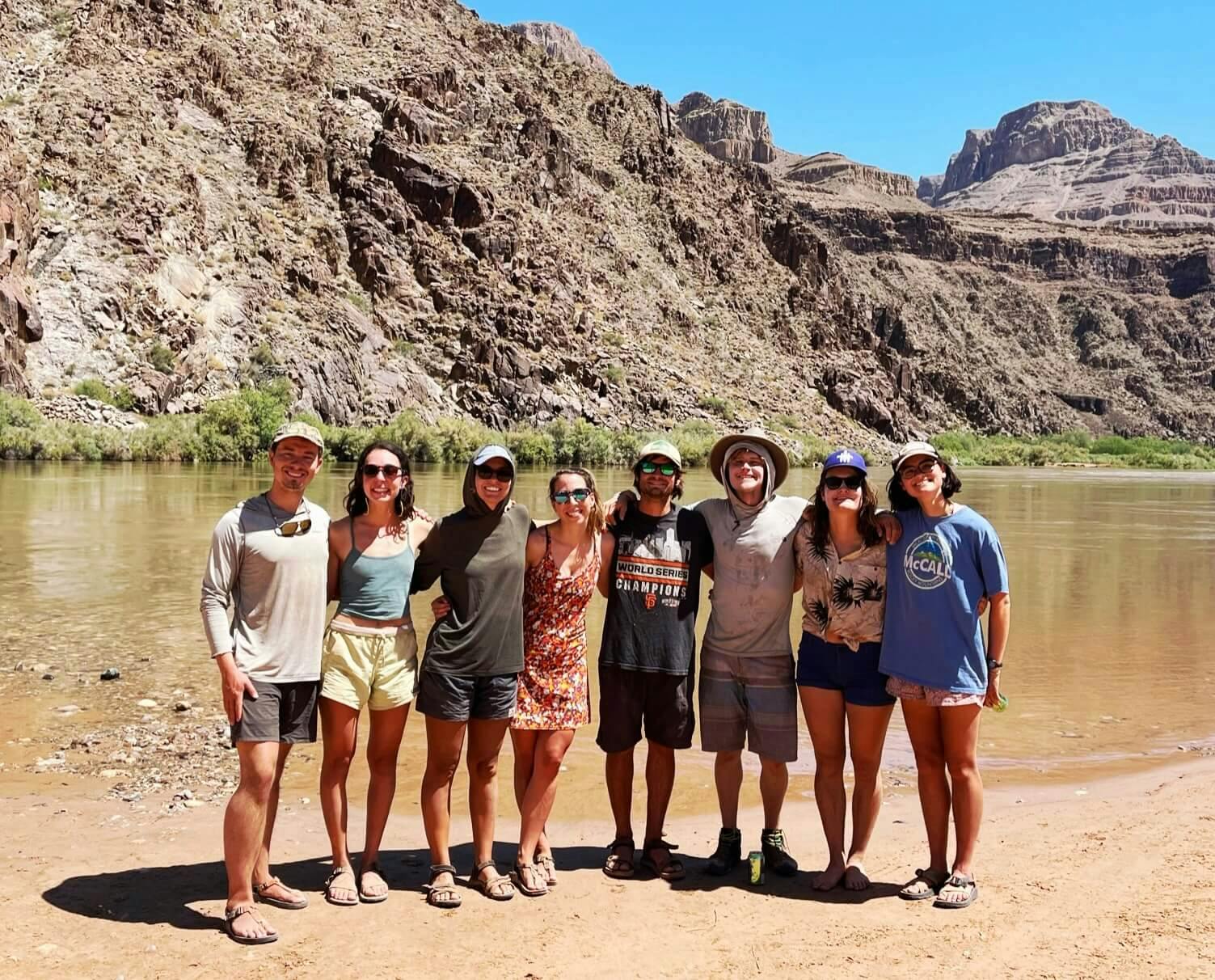
Huge thanks to our incredible crew, who piloted many of these recommendations… and learned some the hard way – our packrafters TL Emma Shaw, mentor, Miles Van Blarcum, Al Nicolopoulos, and Ian Spilman. And our hardshellers, also known as the Packraft Coast Guard, Cam Weiner, Max Boice, and Emma Wagstaff.